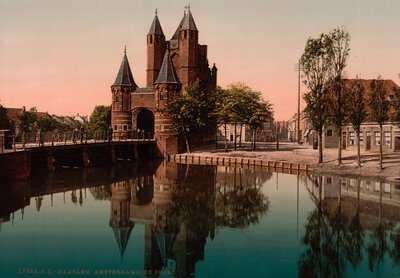John Adams, a pivotal figure in American history, served his burgeoning nation extensively on the international stage. Between 1778 and 1788, his diplomatic duties took him across the Atlantic to France, the Netherlands, and Great Britain. While his strong-willed and independent nature sometimes presented diplomatic challenges, these very missions were crucial in securing America’s standing in the world.
His initial voyage in 1778 was to France. During the American Revolutionary War, Adams was dispatched to join Benjamin Franklin and Arthur Lee in Paris. Their mission was of paramount importance: to forge a crucial alliance with France. However, upon arrival, Adams discovered that Franklin had already finalized the treaty. Despite this initial setback, Adams remained in France, though tensions with Franklin grew. Franklin’s popularity in France led to him being appointed as the sole minister, and Adams was recalled to America, surprisingly without a new assignment.
Feeling slighted, Adams returned to Massachusetts in 1779, intending to retire from public life. Yet, his commitment to service was too strong to ignore. He accepted Congress’s offer to return to Europe, this time as minister plenipotentiary. His new task: to negotiate peace with Great Britain when the opportune moment arose. He embraced this role, viewing his near-unanimous appointment by Congress as a significant endorsement.
Adams’s second stint in France proved turbulent. In July 1780, he voiced his concerns to French Foreign Minister Vergennes, suggesting France wasn’t doing enough to support the American cause. This directness backfired spectacularly. Vergennes, offended by Adams’s unsolicited critique, ceased communication with him. Franklin, siding with the French minister, penned a critical letter to Congress, implying Adams was interfering in areas beyond his purview. Isolated and with his peace negotiation commission revoked (unbeknownst to him at the time), Adams took a significant detour. He journeyed to the Netherlands independently. As he explained to Franklin, his aim was to explore avenues to lessen American dependence on France.
 Amsterdam Port, Courtesy: Library of Congress
Amsterdam Port, Courtesy: Library of Congress
In Amsterdam, John Adams achieved a remarkable diplomatic triumph. The Netherlands, already secretly providing arms to America, had been hesitant to offer further support, especially after American military setbacks. However, news of the American victory at Yorktown, coupled with Adams’s relentless efforts, now backed by Congress, shifted Dutch sentiment. Adams successfully negotiated a substantial $2 million loan, a critical financial boost for the fledgling nation.
Buoyed by his success in the Netherlands, Adams returned to Paris in 1782. His mission was to negotiate the peace treaty that would formally end the Revolutionary War. This task reunited him with Benjamin Franklin, and also brought John Jay into the fold. Crucially, Adams, along with Jay, stood firm, insisting that Great Britain must formally recognize American independence before negotiations could proceed. Franklin, in a rare divergence from French interests, supported this unified American stance. On September 3, 1783, the Treaty of Paris was signed, officially marking the birth of the United States in the eyes of the international community.
Despite his pivotal role in securing peace, Adams felt underappreciated by Congress. His appointment as the first United States minister to Great Britain was not unanimous, a fact that stung him. Some in Congress worried about his outspoken nature and feared it could harm America’s international standing. Arriving in London, Adams found his mission challenging. Despite a cordial first meeting with King George III, he achieved little of substance. The British were unwilling to open their ports to American ships or remove troops from American soil. Although Adams personally enjoyed London, his five-year tenure there yielded limited diplomatic progress.
In 1788, John and Abigail Adams finally set sail for home, returning to America together. Their time in London marked their longest period of cohabitation during their marriage. Adams, once again, declared his intention to retire to farming in Quincy. However, within a month of his return, he was drawn back into politics, running for and winning the office of Vice President, marking yet another chapter in his dedicated service to the United States.